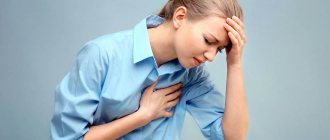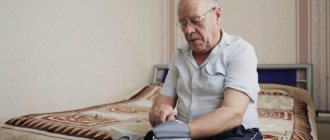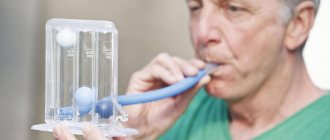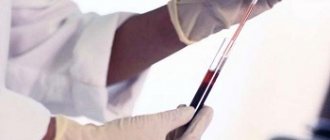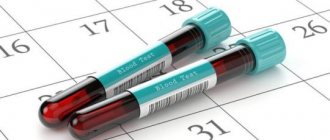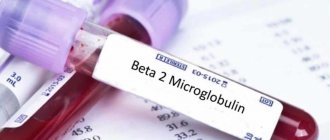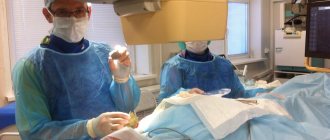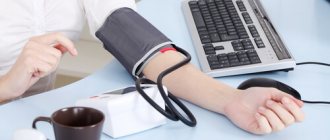Pulse oximetry
– a technique for determining saturation, or the level of oxygen saturation of hemoglobin in the blood.
This is a vital indicator that ensures the normal functioning of the cells and tissues of the body. During coronavirus, saturation levels can rapidly decrease due to pneumonia, so it is important to keep a record of the measurement results. A pulse oximeter
is a small device that is easy to use at home. In our store you can choose an option for any budget to always keep your own health under control.
- Description of pulse oximeters
- Operating principle of a pulse oximeter
- Indications for use of the device
- Application for Covid-19
- Who is recommended to use
- Details for instructions for use
- How to understand pulse oximeter readings
- Recommendations for choosing a heart rate monitor
- How to check the operation of the device
Indications for the study
A hardware method for determining the level of blood oxygen saturation is used to monitor the patient's condition.
It usually shows real-time data. There are models of pulse oximeters that save data and create graphs. In more rare cases, the method in question for determining the level of oxygen in the blood is prescribed as a separate diagnostic method. Pulse oximetry in the sleep medicine department is indicated for patients who suffer from breathing problems during night rest. Breathing disorders at night are observed in the following pathologies:
- hypertension;
- obesity;
- COPD;
- Pickwick's syndrome;
- respiratory failure (from 2nd degree).
Pulse oximetry in the somnology department is needed for people with suspected apnea, in which the following signs are observed:
- holding your breath for a short time during sleep, which occurs periodically;
- sweating at night;
- snore;
- daytime sleepiness + depression;
- Frequent awakenings at night, which reduces sleep efficiency.
Pulse oximetry at the Sleep Medicine Clinic is also performed in the following cases:
- Use of anesthesia. When the patient is under anesthesia, he cannot indicate a deterioration in his condition, so the pulse oximeter will show the necessary data about the condition of the person being operated on.
- Transporting the patient. Due to the portability of the device, it is used to monitor the patient during transportation. This equipment is available on many ambulances, airplanes, and helicopters for medical purposes.
- Operations on the limbs. Such surgical procedures are accompanied by temporary blockage of blood vessels. This is necessary to prevent heavy bleeding. In this case, the device is attached to the finger to control blood circulation. Poor oxygen saturation of tissues is dangerous due to their death.
- Diseases of the lungs, heart. Some pathologies of these organs are accompanied by problems with oxygen saturation in the body. A pulse oximeter helps doctors determine the severity of the disease and select appropriate treatment tactics. Thanks to the procedure, it is possible to quickly identify pathologies that manifest themselves in attacks: apnea, bronchial asthma.
- Resuscitation. In this department, diagnostics are carried out continuously for several days for patients after surgery or for those whose lives are at risk due to a serious illness.
- Training of athletes. The procedure in Rostov is carried out exclusively according to medical advice. indications. Using pulse oximetry, trainers monitor blood oxygen saturation during extreme exercise. At the same time, they make the necessary amendments to training methods.
- Carbon monoxide poisoning, oxygen therapy. In the treatment of some diseases, therapy with a mixture of gases containing a large percentage of oxygen is used. Thanks to the procedure, the effectiveness of the therapy is established.
Who is recommended to use
Portable Pulse Oximeter
- This is a device for home use.
It is suitable for any person who cares about their own health and wants to know all the important indicators. During the coronavirus pandemic, a pulse oximeter remains one of the most useful purchases for use at home. The procedure is simple and painless, and even a beginner can understand the instructions for the device. However, regular measurements are necessary for the following populations:
- people who are at risk of coronavirus;
- for acute and chronic diseases of the cardiovascular system;
- with abnormal development of the heart or blood vessels;
- for various disorders of the respiratory system;
- during the recovery period after surgery;
- during rehabilitation after suffering from coronavirus.
It is important to understand that patients with various diseases that can cause a decrease in saturation need to receive accurate data. To do this, it is worth choosing a high-quality device that will record all changes and produce results without failure. One pulse oximeter is enough to measure the saturation level and pulse of the whole family. For children, you can choose special children's devices - they fit well in size, so they more accurately record the necessary data.
Pulse oximeters are also useful for athletes during training. During classes, oxygen that is in the tissues is rapidly burned, as the muscles experience increased stress. This can lead to a sharp decrease in saturation and deterioration in well-being. During this period, the athlete feels dizziness, weakness and other signs of oxygen starvation. The presence of a compact device will allow you to quickly determine the cause of poor health and select loads in accordance with the physical capabilities of the person.
What the study shows
Pulse oximetry is performed to determine vital signs:
- Pulse rate. This indicator shows the heart rate, but it does not always coincide 100% with it. Sometimes there are differences between the readings of a pulse oximeter and an electrocardiograph. This feature is explained by partial absorption of pulsation by the walls of blood vessels, different elasticity of blood vessels, and blockage of the lumen.
- Saturation. This term refers to the saturation of blood with oxygen. The indicator under consideration indicates disturbances in cardiac activity and breathing immediately, before the following signs of oxygen deficiency appear: blueness of the skin, mucous membranes, change in heart rhythm.
results
Normal SpO2 levels are considered to be 95–98%. If the level is above 98%, the data must be rechecked. A decrease in saturation to 94% is a dangerous condition and requires consultation with a doctor. If there is an asymptomatic decrease in saturation below 90%, it is necessary to check the battery charge. The normal heart rate in adults is between 60–90 beats per minute; in children it is higher and depends on age.
In the catalog of MedComplex A.V.K. There is a wide selection of portable pulse oximeters for children and adults, including a model with a neonatal sensor - PM-60 Mindray, which can be used for newborns. This pulse oximeter is battery operated and also battery operated. All other models run on batteries that are included.
Who gives the referral for pulse oximetry?
Diagnostic results are often needed in the field of resuscitation and anesthesiology. Patients in serious conditions are admitted to these departments. Their pathologies are dangerous because they interfere with vital functions. Doctors monitor the level of oxygen in the blood until the patient's condition stabilizes.
Pulse oximetry in the clinic can also be prescribed by specialists in the following profiles:
- therapist;
- resuscitator;
- surgeon;
- phthisiatrician;
- pulmonologist;
- anesthetist.
Features of preparation for research
No specific preparation is required to perform pulse oximetry at the Sleep Medicine Clinic. In any case, the device will show the oxygen saturation of the blood. But to make the data more objective, it is recommended to follow the rules below:
- Do not consume stimulants before the procedure: energy drinks, caffeine, narcotic drugs. The condition of the body changes as the effect of the listed drugs weakens.
- Elimination of alcohol. Alcohol slightly distorts the readings of the device.
- Avoiding smoking. Smoking before pulse oximetry contributes to changes in the depth of inspiration, vascular tone, and heart rate, affecting the accuracy of measuring blood oxygenation. A bad habit leads to a decrease in the level of oxygen in the blood.
- Refusal to use nail polish or hand cream on the day of diagnosis. They create an obstacle to light waves.
- You should eat as usual. It is not advisable to overeat or fast on the day of diagnosis. Otherwise, the measurement results will be distorted.
What can affect readings when measured with a pulse oximeter
The accuracy of measurement readings is affected by:
- Choosing a location. Excessively bright sunlight or the rays of operating lamps may prevent reliable readings from being obtained. To perform the procedure, it is better to choose a room with moderate lighting.
- Human movement, shaking. Human movement, including trembling, will lead to incorrect interpretation of data. In these cases, the sensor's contact with the body shifts. It is optimal to measure indicators in a supine position. If for any reason the patient is trembling, the procedure should be performed after the trembling has stopped.
- Low battery. Errors cannot be avoided if the device’s battery is discharged; it is not advisable to measure with a discharged device. Before use, make sure there is enough charge. The charge level is shown on the screen by a special icon.
- Mounting the device. Errors in measurements can be caused by insufficient fixation on the body or excessive compression, for example, when the finger is pinched too tightly. The use of force to fix the device is unacceptable. It is also important that the distance between the LED and the photodetector is equal throughout the entire area.
- Reduced tissue perfusion. This situation entails a decrease or disappearance of the pulse wave.
- Carbon monoxide poisoning. In people who inhale smoke, the amount of hemoglobin bound to carbon monoxide increases significantly. Most instruments cannot detect the difference, so the saturation level will be exceeded.
- Availability of dyes. Gel, varnish, and shellac on nails provoke underestimated values, since the coloring substance absorbs light. Errors occur when nails are painted, as well as in cases of skin pigmentation with henna or other mixtures.
- Profound anemia. At values below 50 g/l, 100% saturation indicators are observed even with a lack of oxygen in the blood.
Using a pulse oximeter, we can promptly consult a doctor for help with coronavirus. Today, a medical device should be present in every family. Detailed information such as temperature, pulse and blood oxygen saturation will help the specialist prescribe appropriate treatment even during a remote consultation.
Types of sensors
Specialists can carry out the procedure using various sensors. Their choice depends on the purpose and features of use. Any sensor is connected via a flexible wire to the device. To carry out diagnostics in practice, the following types of sensors are used:
- Clips. Similar to the shape of a clothespin. Attaches to the index finger and earlobe. Used in the diagnosis of adults and adolescents for their observation over a short period.
- Silicone for adults. They are suitable for monitoring blood oxygen saturation over a long period (3 - 4 hours).
- Flexible silicone. Typically used in newborn studies. Attach to the side of the leg.
- Ear clips. They are distinguished by the presence of convenient clamps, with the help of which they are attached to the auricle.
Description of pulse oximeters
Portable pulse oximeters resemble a small clothespin that fits onto your finger. They simultaneously measure two vital signs: pulse and saturation. The measurement methods are non-invasive, that is, they do not require skin puncture, blood sampling or other painful procedures. The device runs on batteries and can be stored in a home medicine cabinet. There are several types of similar devices, and it is worth familiarizing yourself with each of them before purchasing.
A clip-on pulse oximeter is the most common option and is suitable for use in hospitals and at home. You can purchase such a device in our store and use it according to the instructions. For professional use, you can also find pulse oximeters for round-the-clock monitoring of saturation levels. They are also attached to the finger, but a cord extends from them to a bracelet located on the wrist. The indicators are constantly displayed on a small monitor. There is also professional-sized equipment that is used during the treatment of patients with lung diseases in a hospital.
Types of pulse oximetry
There are now many models of pulse oximeters, so doctors use different research techniques:
- Computer. The research results are processed by a microprocessor built into the device. The advantages of computer diagnostics are: elimination of distortions (artifacts), data storage, compatibility with other devices, alarm.
- Transmission. This technique is considered the most common due to the low cost of the device and ease of diagnosis. All models can be used at home.
- Reflected. This type of diagnosis is new. The main difference is in the design of the sensor, where the detector and light source are located on the same side. The sensor has a flat shape. This sensor can be attached to any part of the body.
- Night. Used to study apnea. The sensors are attached during sleep. The procedure is performed by somnologists at the South Clinic.
- Daily allowance. The study is carried out using a portable device capable of reading data throughout the day.
- Non-invasive. The level of blood oxygenation is determined without direct contact of the device’s sensor with the blood.
- Invasive. The method is quite complicated. It is used in specialized departments of clinics. The sensor is inserted into a previously dissected blood vessel.
Clinical examples of monitoring pulse oximetry
Below are the results of monitoring pulse oximetry during sleep in patients of the Barvikha Clinical Sanatorium.
Norm
Rice. 2. Healthy volunteer S., 28 years old. At the top of the figure: statistical data for the study. In the middle: 8-hour scan of saturation and pulse curves. At the bottom: 5-minute scan of saturation and pulse curves.
Blood oxygen saturation levels are normal. Average SPO2 saturation = 98%. Minimum saturation – 90%. The saturation curve is almost a straight line.
Obstructive sleep apnea syndrome, severe form
Rice. 3. Patient Z., 49 years old. Severe form of obstructive sleep apnea syndrome, stage 3 obesity. At the top of the figure: statistical data for the study. In the middle: 8-hour scan of saturation and pulse curves. At the bottom: 15-minute scan of saturation and pulse curves.
Average saturation is reduced (87%) due to the high frequency of severe cyclic desaturations (minimum saturation 52%). Desaturation index – 46 per hour. Outside of periods of desaturation, blood oxygen saturation is within normal limits. The absence of constant chronic hypoxemia is also indicated by such an indicator as “The maximum constant period of decrease in SpO2 below 89%.” It is only 1 minute. Those. even with sharp drops in saturation, after a maximum of a minute, blood oxygen saturation returns to a level above 89%. There are pronounced pulse fluctuations (from 53 to 70 per minute) associated with periods of desaturation.
Rice. 4. The same patient as in Fig. 3.
The figure shows an episode of a drop in saturation lasting 75 seconds from 86% to 53%. It should be noted that when saturation is below 70%, a person begins to turn blue. Such catastrophic problems with saturation are caused by acute asphyxia due to the collapse of the airways at the level of the pharynx during sleep and the development of an episode of obstructive apnea. As a result, the body develops a stress response with activation of the sympathetic nervous system and the release of catecholamines. Blood pressure and pulse rise sharply (in the figure from 55 to 75 in 20 seconds). The brain partially awakens and gives the command to open the airways. But after breathing is restored and the blood is saturated with oxygen, the brain falls asleep, the airways collapse again and the apnea cycle repeats.
This picture is highly specific for obstructive sleep apnea syndrome and reflects a drop in blood oxygen saturation against the background of cyclic apneas and hypopneas. Cyclic desaturations can also be observed with central sleep apnea syndrome (Cheyne-Stokes breathing), but their form is somewhat different from desaturations with obstructive apneas. With obstructive apnea, there is a gentle decline and a rapid rise in saturation during the ventilation phase, as breathing abruptly resumes when the airways open. With central apnea, the descending and ascending limbs of the desaturation episode are almost equal in duration, since the development of apnea is caused by disruption of the respiratory center, which is quite smoothly inhibited and also smoothly restores its activity. Thus, ventilation is resumed gradually, and accordingly, the restoration of saturation also occurs quite smoothly.
It has now been proven that obstructive sleep apnea syndrome is one of the main causes of secondary arterial hypertension [12]. In patients with treatment-resistant hypertension, the incidence of OSA exceeds 80% [6]. During a 12-year follow-up of untreated patients with severe OSA, the risk of developing non-fatal cardiovascular complications was 35%, fatal 15%, which is 5 and 3 times higher, respectively, than in a comparable group of patients without OSA [13].
In patients with moderate to severe forms of OSA, noninvasive ventilation with continuous positive pressure during night sleep (CPAP therapy) is indicated. Giving oxygen during sleep does not provide the desired therapeutic effect due to the persistence of frequent periods of obstructive apnea. Moreover, periods of apnea can be significantly prolonged. This is due to the fact that, against the background of oxygen supply, the critical drop in saturation that awakens the brain occurs much later.
Severe nocturnal hypoxemia secondary to hypoventilation
Fig.5. Patient F., 67 years old. Severe form of COPD (emphysematous type - “pink puffer”), chronic cor pulmonale, pulmonary hypertension, respiratory failure stage 2, heart failure stage 1. Severe chronic nocturnal hypoxemia.
Average saturation during night sleep is 82%. Minimum saturation – 66%. There were 65 significant episodes of desaturation recorded (6.6 episodes per hour). The maximum continuous period of SpO2 reduction below 89% is 66 minutes.
The patient has severe nocturnal hypoxemia due to the underlying disease. At the same time, only a small number of desaturations characteristic of periods of apnea/hypopnea were identified. Thus, the patient did not have clinically significant sleep apnea syndrome.
This patient has absolute indications for long-term oxygen therapy during sleep [3, 6, 8]. The patient's blood gas composition and daytime saturation must be additionally examined. If hypoxemia occurs during the daytime, then continuous oxygen therapy will be required for at least 15 hours a day.
The selection of an effective oxygen dosage during the day can be carried out under the control of blood gases and one-time saturation measurements. At night, the dosage is usually empirically increased by 1 liter. However, to accurately assess the effectiveness of treatment at night, control computer pulse oximetry during sleep is required. In the future, it is necessary to perform pulse oximetry during sleep once every 6 months or in case of a significant change in the patient’s clinical condition. Dynamic monitoring of the effectiveness of treatment during the day can be carried out by the patient himself if he has a pulse oximeter for one-time measurements.
Using the example of this patient’s medical history, I would like to make a number of generalizations regarding the tactics of diagnosis and treatment of patients with chronic respiratory failure and hypoxemia in domestic healthcare. What objective criteria are currently used by pulmonologists and cardiologists to diagnose chronic respiratory failure? Of course, the gold standard is blood gas testing. There are clear international and domestic recommendations on this matter. But how often are these tests performed on patients outside the intensive care unit? Which practitioner prescribes this study in outpatient settings for stable, albeit severe, patients with respiratory failure? But it is precisely in patients in a stable condition that it is necessary to evaluate blood oxygen saturation indicators in order to decide on the issue of long-term oxygen therapy. If the doctor does not have objective criteria for hypoxemia, then he does not prescribe long-term oxygen therapy, although this is one of the few opportunities to prolong the life of patients with chronic respiratory failure. A comparison with a conventional tonometer is appropriate here. If the doctor did not measure blood pressure, then the diagnosis of hypertension would be made much less often, since the clinical symptoms of increased blood pressure are very nonspecific.
In this situation, the use of a simple non-invasive pulse oximetry technique makes it possible to objectively assess saturation parameters and make the right clinical decision. The widespread use of conventional and computerized pulse oximeters will significantly improve the detection of patients with chronic hypoxemia and improve the prognosis of their lives by promptly applying long-term oxygen therapy.
Research algorithm
Pulse oximetry at the South Clinic is considered an absolutely painless research method. The patient lies down on a sofa or couch. A sensor from the device is attached to his finger or wrist. There is no injury to the skin when putting on or removing the sensor. Doctors do not tighten clothespins or bracelets too much, so as not to impede blood circulation in the examination area.
In practice, it is customary to use research over a long period of time (several hours, days, night, day).
The procedure goes like this:
- Preparing for the study.
- Attach the sensor to your finger or earlobe.
- Turning on the device.
- Displaying data on the monitor.
Instructions for use
Portable models of pulse oximeters are easy to use at home. They operate on batteries or rechargeable batteries that are charged from the mains. You can use them either independently or with the help of other people. Before first use, it is important to read the instructions for the specific device. There are basic rules:
- Before use, it is necessary to assess the battery charge level. If it is very low, the data is distorted.
- If the device has not been used for a long time, it is advisable to wipe the sensors with a dry cloth.
- After turning on the pulse oximeter, you need to wait 1-2 minutes for it to load.
- The pulse oximeter can be installed on the finger, ear or wings of the nose. When measuring on a finger, it is advisable that the nail is without varnish to avoid distortion of the results.
- The measurement time should be at least 25 seconds, and it is advisable to remain still (does not apply to neonatal sensors).
- After completing the measurement, the pulse oximeter must be turned off and stored away from moisture and direct sunlight.

